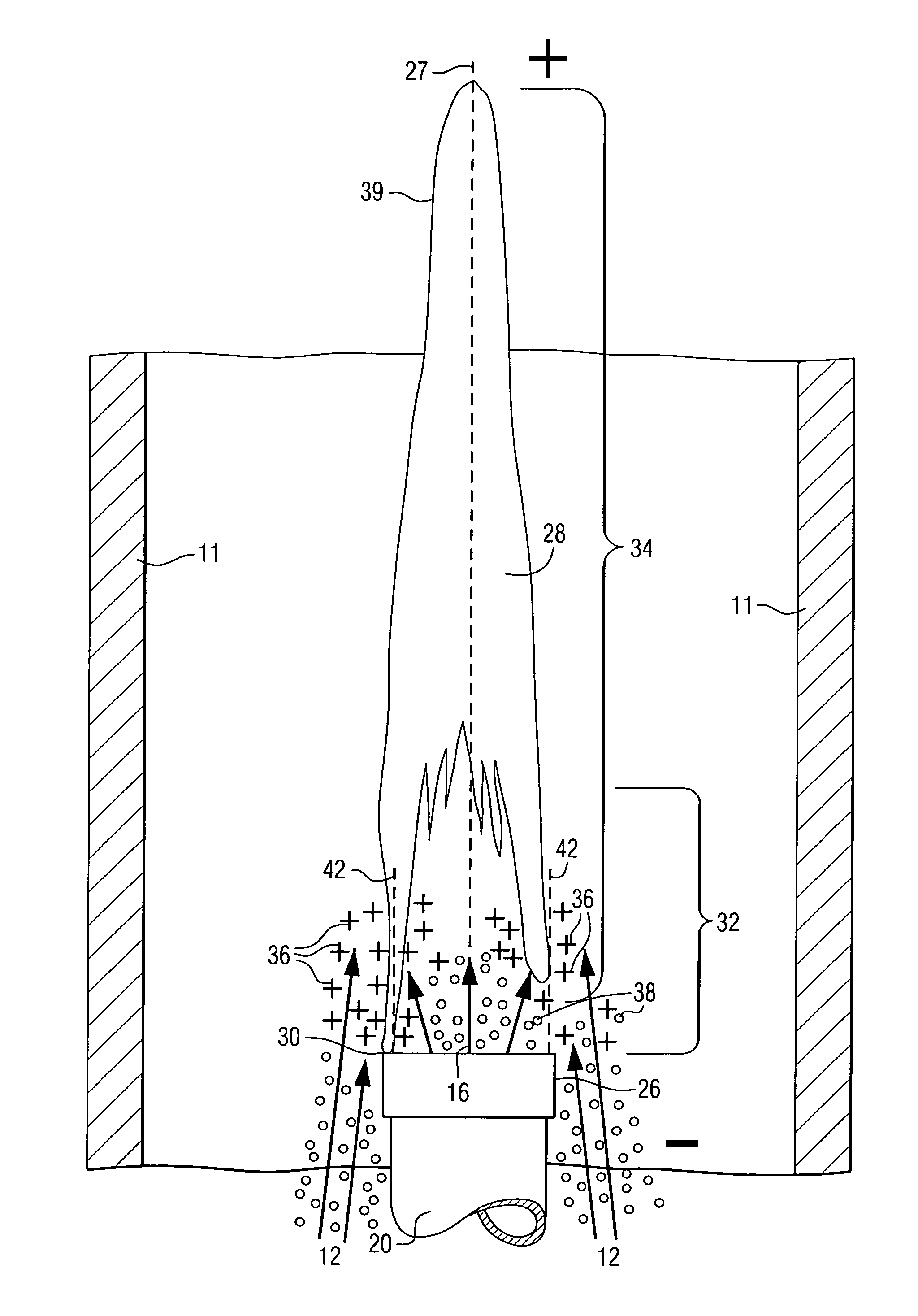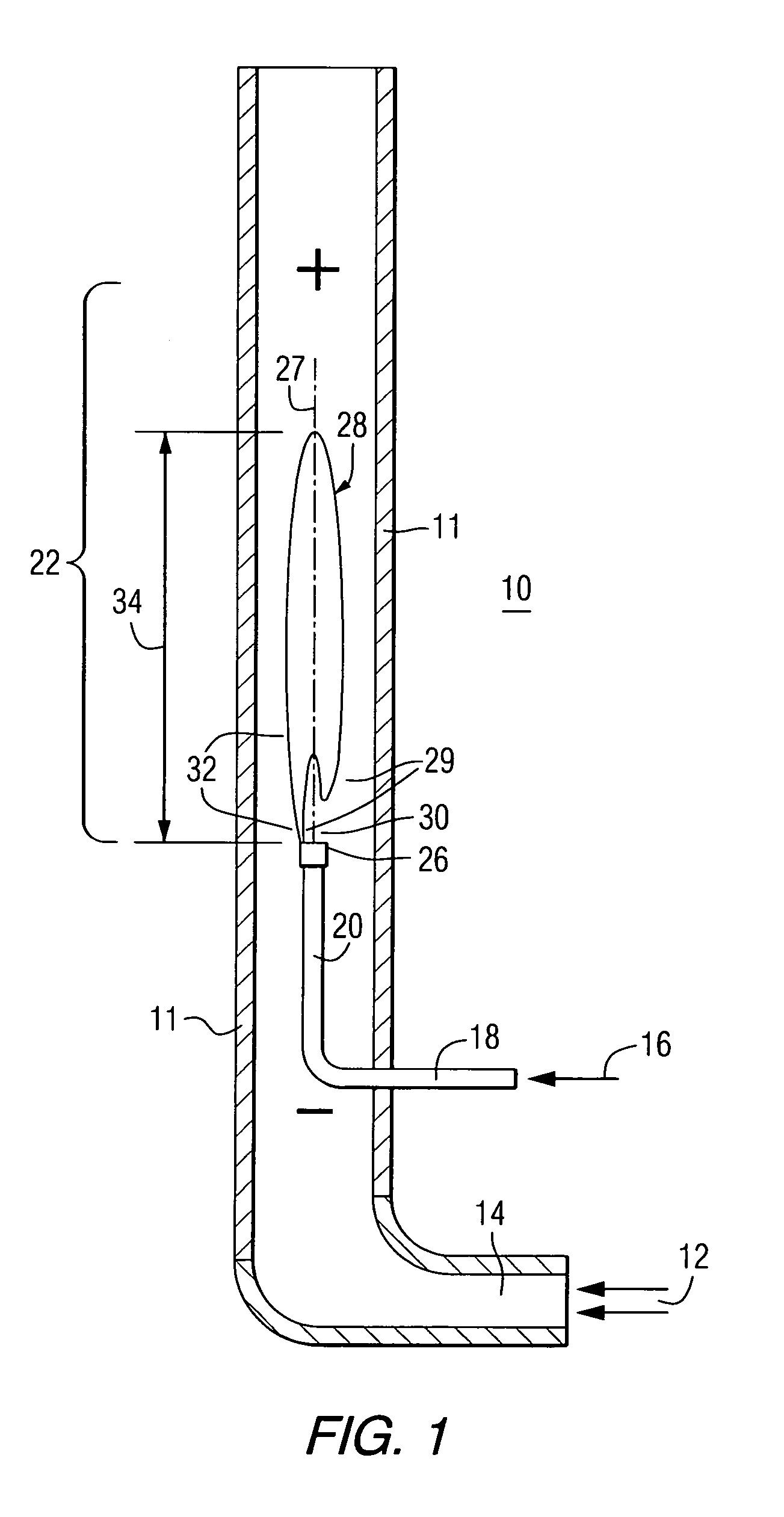Electric flame control using corona discharge enhancement
a technology of electric field and corona discharge, which is applied in the ignition of turbine/propulsion engine, combustion using lump and pulverulent fuel, combustion types, etc., can solve the problems of not being able to change the burning velocity, electric field becomes less effective, and the use of electric field to significantly impact high-speed turbulent flames has not been demonstrated. , to achieve the effect of reducing nitrogen oxide emissions
- Summary
- Abstract
- Description
- Claims
- Application Information
AI Technical Summary
Benefits of technology
Problems solved by technology
Method used
Image
Examples
example
[0034]An apparatus was set up to combust air and methane fuel at the end of a methane fuel feed tube concentric within an air feed tube, essentially as shown in FIG. 1. The apparatus had a positive electrode placed above the end of the fuel feed tube, which tube was given a negative charge to make it a negative electrode such that an electric (static) field was generated between the electrodes along a flame axis parallel to the apparatus walls and parallel to the fuel feed tube and oxidant entry combustor walls. The inside diameter of the apparatus was about 2.2 cm, the outside diameter of the fuel feed tube was 0.5 cm and the outside diameter of the circular positive electrode, placed within the apparatus and above the fuel feed tube was 1.9 cm; its distance above the fuel feed tube was 10.0 cm. Methane was passed through the fuel feed tube at a rate of about 1.9 standard cubic feet / minute (53.8 liter / min) and pressurized air was passed around the fuel feed tube within the walls of...
PUM
 Login to View More
Login to View More Abstract
Description
Claims
Application Information
 Login to View More
Login to View More - R&D
- Intellectual Property
- Life Sciences
- Materials
- Tech Scout
- Unparalleled Data Quality
- Higher Quality Content
- 60% Fewer Hallucinations
Browse by: Latest US Patents, China's latest patents, Technical Efficacy Thesaurus, Application Domain, Technology Topic, Popular Technical Reports.
© 2025 PatSnap. All rights reserved.Legal|Privacy policy|Modern Slavery Act Transparency Statement|Sitemap|About US| Contact US: help@patsnap.com



